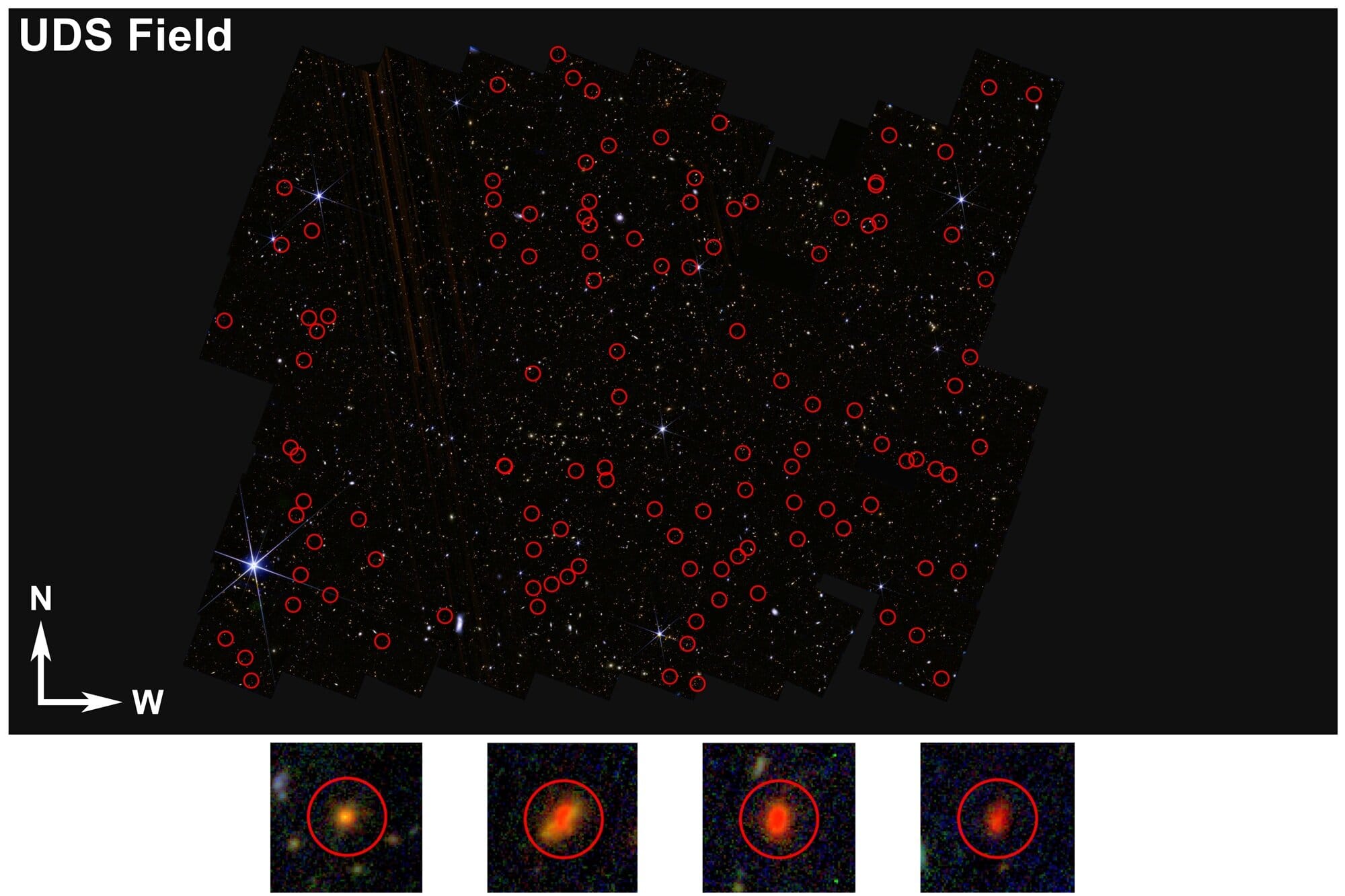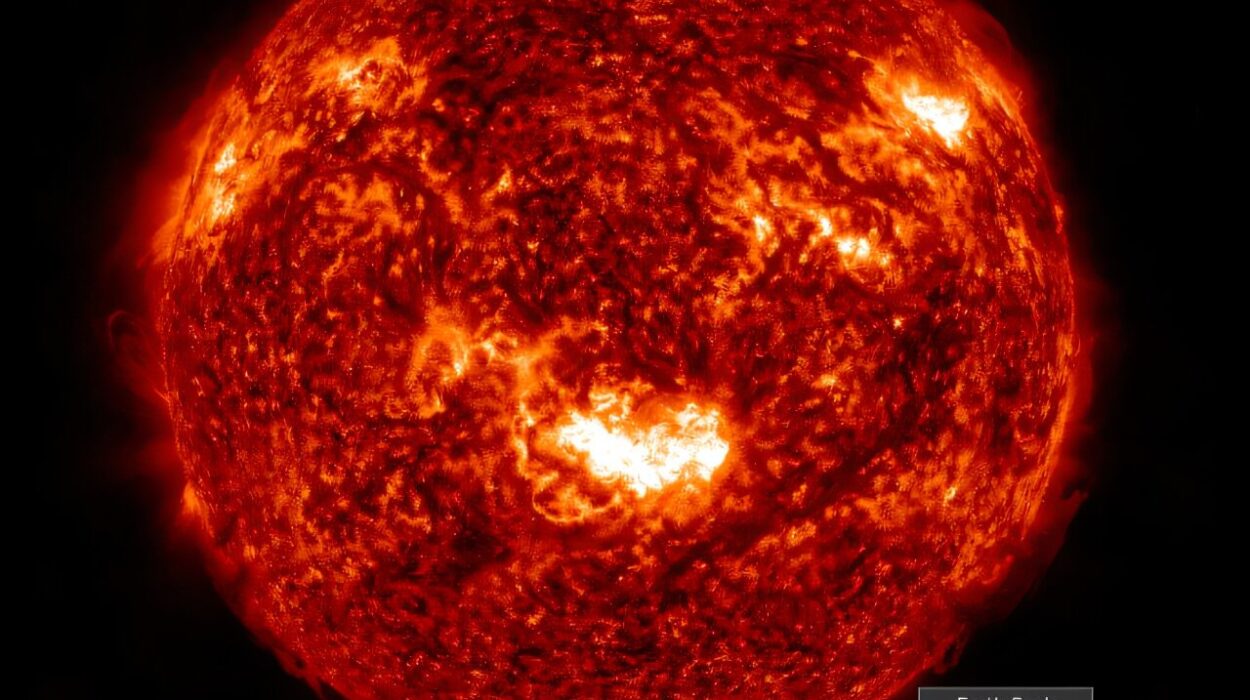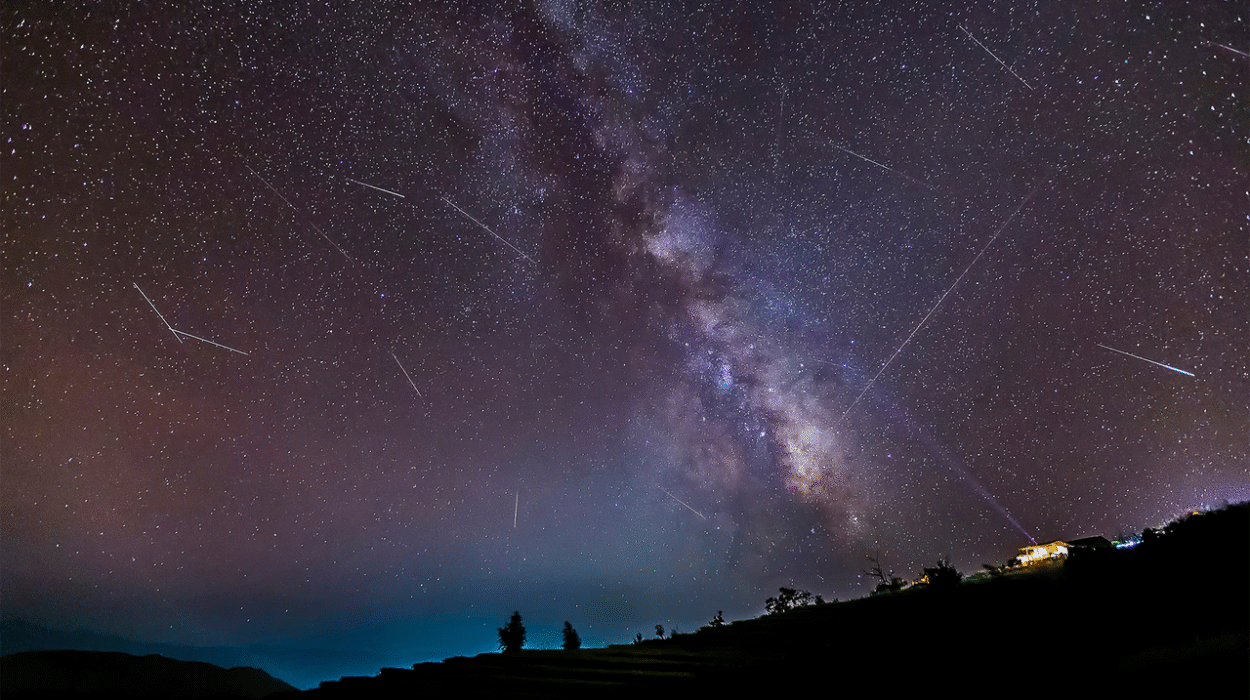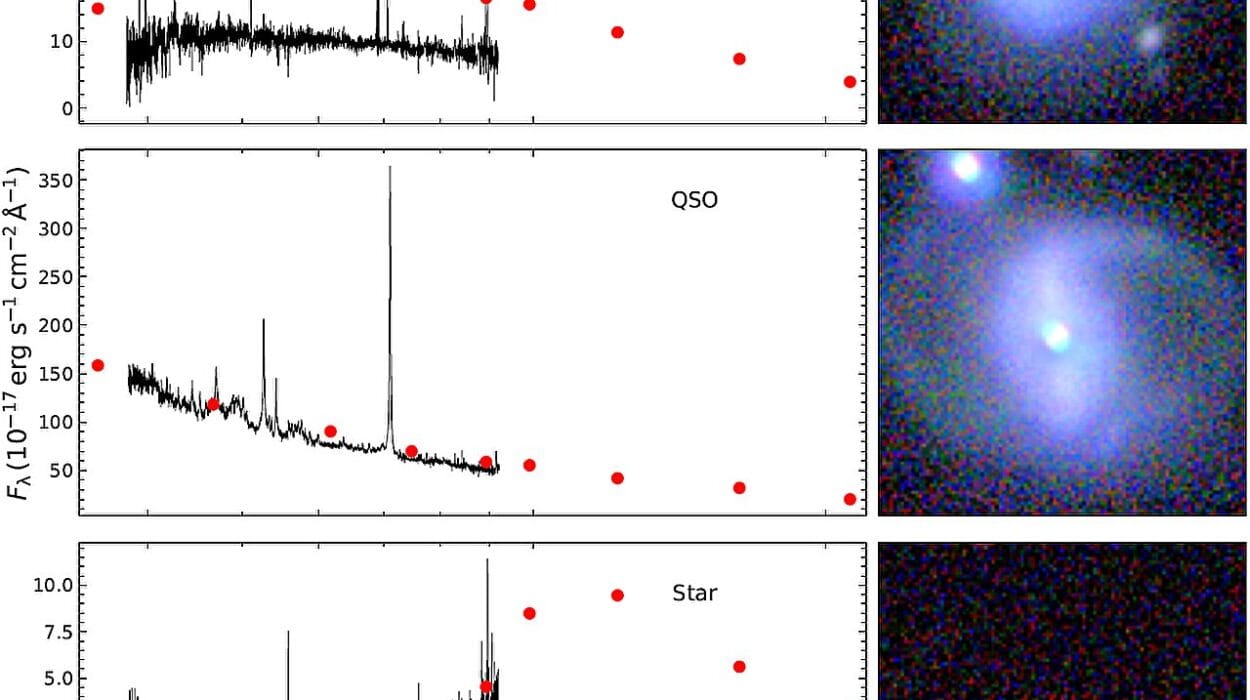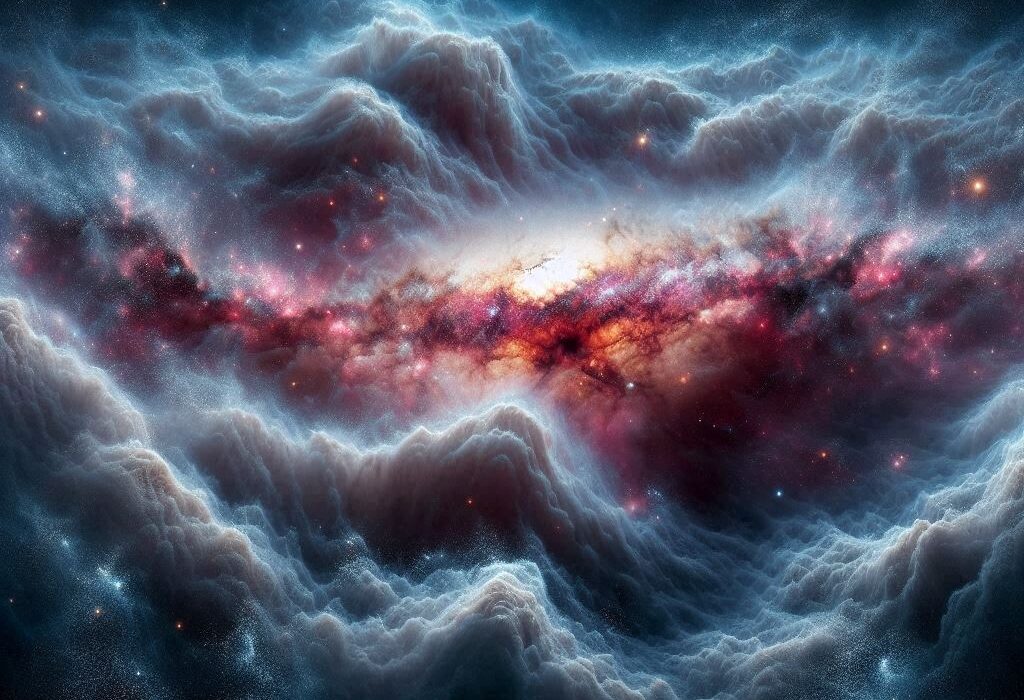In a discovery that could upend our understanding of how the cosmos began, scientists at the University of Missouri have spotted more than 300 unusually bright objects in the farthest reaches of space. Captured by NASA’s James Webb Space Telescope (JWST), these dazzling points of light may be ancient galaxies born shortly after the Big Bang — or something even stranger.
“They’re brighter than they should be,” said Haojing Yan, an astronomy professor in Mizzou’s College of Arts and Science and co-author of the study. “If even a few of these objects turn out to be what we think they are, our discovery could challenge current ideas about how galaxies formed in the early universe.”
The study, published in The Astrophysical Journal, takes us billions of years back in time, to when the first stars and galaxies flickered to life. Yet as extraordinary as the find is, confirming what these objects truly are will require patience, precision, and a bit of cosmic detective work.
The Tools for Seeing the Invisible
To spot these potential galactic ancestors, the Mizzou team turned to two of JWST’s most advanced instruments: the Near-Infrared Camera (NIRCam) and the Mid-Infrared Instrument (MIRI). These devices are engineered to detect infrared light — the stretched-out glow of ancient starlight that has been traveling across space for billions of years.
Why infrared? Because as the universe expands, light from distant objects is stretched into longer, redder wavelengths in a process known as redshift. The greater the redshift, the older and farther away the object.
“As the light from these early galaxies travels through space, it shifts from visible light into infrared,” Yan explained. “That redshift is our time machine — it tells us how far back we’re looking, and how close these galaxies are to the universe’s beginning.”
The Cosmic ‘Dropout’ Clue
Finding ancient galaxies isn’t as simple as scanning the skies. The Mizzou researchers used a clever trick called the dropout technique to identify their candidates.
“We look for objects that appear in redder wavelengths but disappear in bluer ones,” said Bangzheng “Tom” Sun, a Ph.D. student at Mizzou and lead author of the study. “That vanishing act happens because their light has been absorbed by neutral hydrogen on its long journey to us, creating a feature known as the Lyman Break.”
This spectral fingerprint is a reliable sign of high-redshift galaxies — cosmic bodies that formed when the universe was still in its infancy.
Peering Into Their Secrets
Once the candidates were identified, the next challenge was estimating just how old and far away they might be. The gold standard for measuring distance in astronomy is spectroscopy, which spreads a galaxy’s light into its component colors to reveal its chemical makeup, age, and distance with high accuracy.
But spectroscopy is resource-intensive, and with hundreds of potential targets, the team first turned to spectral energy distribution (SED) fitting — a method that uses a galaxy’s overall light profile to make an educated estimate of its properties.
“In the past, we often dismissed such bright objects in the early universe as impostors,” Yan said. “But our analysis suggests we shouldn’t be so quick to rule them out.”
The brightness of these objects is especially puzzling. If they truly are early galaxies, they must have formed stars — and a lot of them — at an almost unimaginable pace, challenging conventional theories of galaxy formation.
Waiting for the Final Word
The ultimate proof will come when spectroscopy is applied to more of these objects. By splitting their light into a rainbow of wavelengths, scientists can confirm exactly how far away they are, and what they’re made of.
“One of our objects is already confirmed by spectroscopy to be an early galaxy,” Sun noted. “But one is not enough — we need more confirmations before we can say with certainty that current theories need to be rewritten.”
If even a handful of these luminous beacons are genuine early galaxies, it could mean that the first cosmic structures formed faster, larger, and brighter than astronomers have ever imagined — rewriting the first chapter of the universe’s story.
More information: Bangzheng Sun et al, On the Very Bright Dropouts Selected Using the James Webb Space Telescope NIRCam Instrument, The Astrophysical Journal (2025). DOI: 10.3847/1538-4357/addbe0
